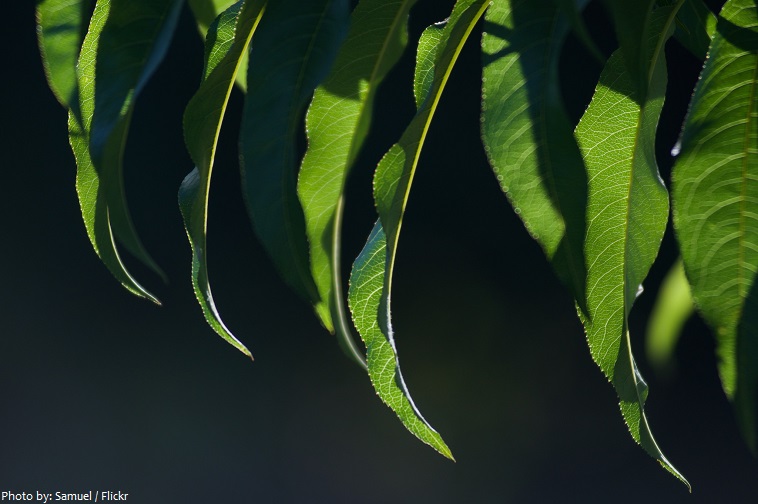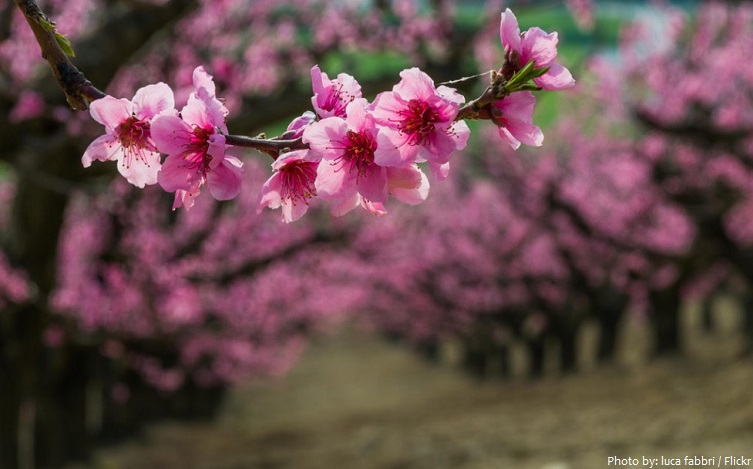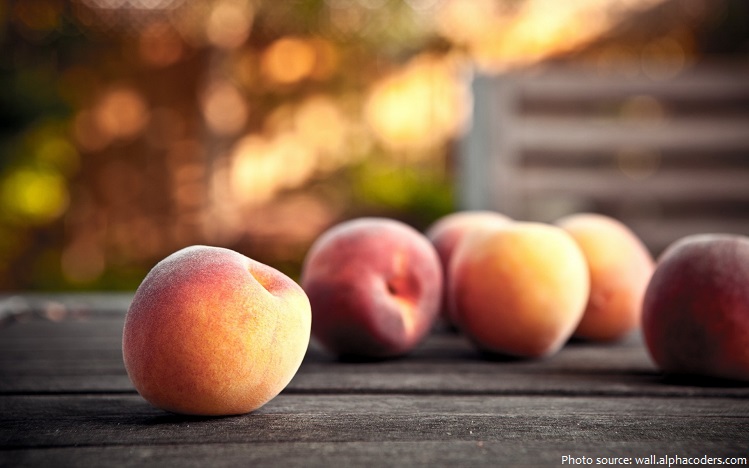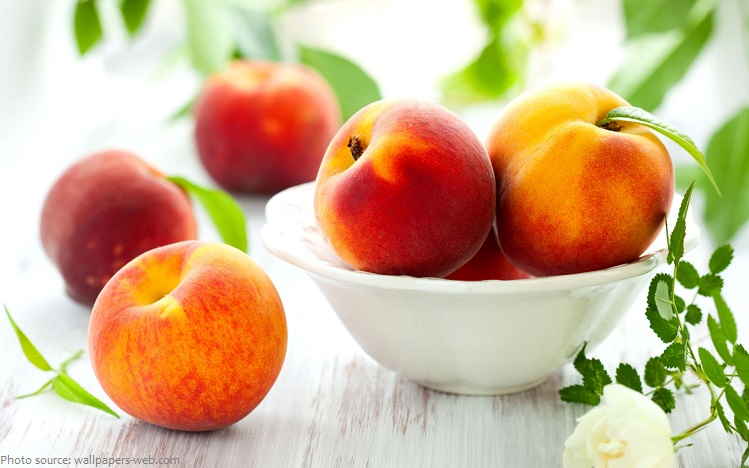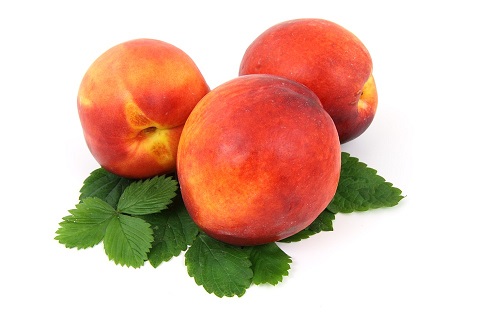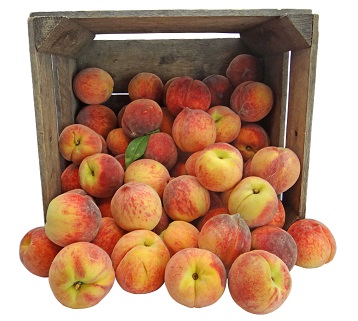Peaches are a widely popular delicious, juicy fruit.
Scientifically the peach tree is know as prunus persica.
Peach originate from the region of Northwest China, but today it can be found in many parts of the world.
Peaches grow in a fairly limited range in dry, continental or temperate climates, since the trees have a chilling requirement (period of cold weather after which a fruit-bearing tree will blossom).
There are over 2000 varieties of peaches in the world.
The average lifespan of a peach tree is about 12 years.
The peach tree grows to 3–10 m (10–33 ft) tall and 15 centimeters (6 inches) in diameter. Under cultivation, however, they are usually kept between 3 and 4 metres (10 and 13 feet) by pruning.
The leaves are lanceolate, 7–16 cm (2.8–6.3 in) long, 2–3 cm (0.79–1.18 in) broad, pinnately veined.
The flowers are produced in early spring before the leaves; they are solitary or paired, 2.5–3 cm (around 1 inch) diameter, pink, with five petals.
The fruit has yellow or whitish flesh, a delicate aroma, and a skin that is either velvety (peaches) or smooth (nectarines) in different cultivars. It’s possible to find flatish, disc-shaped varieties, but the most common type is spherical, with a little peak (known as a ‘beak’) at one end.
The single, large seed is red-brown, oval shaped, approximately 1.3–2 cm (0.5-0.8 in) long, and is surrounded by a wood-like husk. The seed holds all of the genetic material needed for growth and if the environmental conditions are correct, it begins to sprout.
Peaches are widely eaten fresh as a dessert fruit.
Low-acid white-fleshed peaches are the most popular kinds in China, Japan, and neighbouring Asian countries, while Europeans and North Americans have historically favoured the acidic, yellow-fleshed cultivars.
Besides color, peaches are also distinguished by how their pits separate from the flesh. Clingstone – the flesh sticks to the pit; Freestone – the pit is easily separated from the flesh.
The health benefits of peach fruit include relief from hypokalemia, cancer, obesity, cholesterol, blood stasis and neurodegenerative diseases. It helps in maintaining healthy vision, skin care, nervous system, healthy bones, and teeth. It has anti-aging properties and also helps in detoxification, as well as improving digestion and cellular health. It has a wealth of essential nutrients and antioxidants which are valuable during pregnancy and it helps in strengthening the immune system.
Peaches store a broad range of nutrients that are vital for the healthy functioning of the body. Peaches are a rich provider of vitamin A, beta-carotene, and vitamin C. They are also a good source of vitamin E, vitamin K, vitamin B1, vitamin B2, vitamin B3, vitamin B-6, folate, and pantothenic acid. Peaches also offer a rich treasure of minerals such as calcium, potassium, magnesium, iron, manganese, phosphorous, zinc, and copper. Peaches are low in calories, contain no saturated fat or cholesterol, and are a good source of dietary fiber.
A medium peach, weighing 100 g (3.5 oz), contains 39 calories.
People consume peaches raw or in the form of juices, and various desserts such as pies, cobblers, tarts, compote, jam and ice cream.
Peach and nectarines are the same species, even though they are regarded commercially as different fruits.
The peach is a member of the rose family and is a close relative of almonds.
Peaches, along with cherries, plums and apricots, are stone fruits. They are called “stone fruit” because of the hard pits surrounding their seeds.
The scientific name persica, along with the word “peach” itself and its cognates in many European languages, derives from an early European belief that peaches were native to Persia (modern-day Iran).
The Ancient Romans referred to the peach as malum persicum “Persian apple”, later becoming French pêche, hence the English “peach”.
The scientific name, Prunus persica, literally means “Persian plum”, as it is closely related to the plum.
Until recently, it was believed that the cultivation started circa 2000 BC. Nevertheless, the recent evidence indicates that domestication occurred as early as 6000 BC in Zhejiang Province of China.
From China it spread westward through Asia to the Mediterranean countries and later to other parts of Europe. The Spanish explorers took the peach to the New World, and as early as 1600 the fruit was found in Mexico.
For centuries the cultivation and selection of new varieties of peaches were largely confined to the gardens of the nobility, and large-scale commercial peach growing did not begin until the 19th century, in the United States.
China is the world’s leading producer of peaches accounting for about half of world production.
The heaviest peach weighs 810 g (1 lb 12 oz) and is an Autumnstar variety harvested by Robert Hogue (Canada) at Roseridge Orchards, in Kelowna, British Columbia, Canada, as weighed on 12 September 2016.
Many famous artists have painted still life with peach fruits placed in prominence. Caravaggio, Vicenzo Campi, Pierre-Auguste Renoir, Claude Monet, Édouard Manet, Henri Fantin-Latour, Severin Roesen, Peter Paul Rubens, Van Gogh are among the many influential artists who painted peaches and peach trees in various settings.
Renoir encouraged students to improve their painting skills by reproducing the textures and colors of peaches.
In China, peach is a symbol of good luck, protection and longevity.
August is National Peach Month in the USA (since 1982!).
Georgia is the Peach State, but California produces about 50 percent of the USA peaches.


